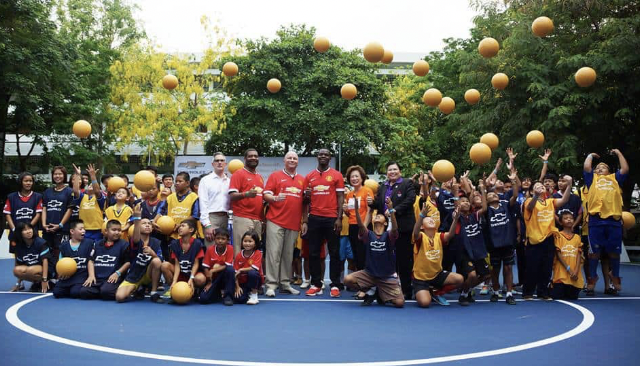By Sarah Huxley
Can you understand what an ice cream is without eating it, but by only looking at it and describing it? Without experiencing its texture, taste, coldness, flavour, smell, and examining the multi-faceted and layered sensory experience that is all part of the process of eating an ice cream. This process is in its own way a celebration of sensory experience, movement and being. The process of eating an ice cream is a blog post in itself, but I won’t digress.

Source: Unsplash @Foodism360
For my research on exploring fun and learning, I understand ‘fun’ to be an ice cream of sorts. This may also be partly because I am writing this blog in 32-degree heat, but the metaphor stands.
Fun is an ambiguous concept, which has different connotations in different cultures and deserves to be better understood alongside learning processes. This is the premise upon which my thesis is based. I am looking at what fun is, does and why it may be important with a sport for social change organisation called Coaches Across Continents (CAC) https://coachesacrosscontinents.org/.
 Source: Coaches Across Continents (CAC)
Source: Coaches Across Continents (CAC)
For the purposes of this post, I want to acknowledge and focus on the work of the anthropologist Tim Ingold, in particular, his joyful book “Being Alive: Essays on Movement, Knowledge and Description” (2011). Here he sets the case for his beliefs that “it is by moving that we know… a being that moves, knows and describes must be observant…[and] is being alive to the world” (Ingold, 2011: xii). Ingold does not like binaries: the mind is not a separate entity to the body (drawing from Merleu Ponty), nor is the world we inhabit a separate entity to humanity. For him ‘wayfaring’ is the rhythmic patterning of how people contribute alongside “through their movements to its [the worlds] ongoing formation” (p.44).
Ingold (2011) reminds sensory researchers of the bias of “head over heels”, and that the sense of touch, especially via feet and its wayfaring with the ground, especially in Western research practices is often ignored. Actually, there is much to be learnt as a researcher from his call to focus on the movement of intransitive and haptic experiences: not from the “accumulation of knowledge through successive points of rest”, but rather to consider that “for the most part we do not perceive things from a single vantage point, but rather by walking around them” (p.45).
As I am starting to build and prepare my methods using sensory ethnography, and this will mean participating and observing the ‘on-pitch’ games that CAC develop and use with their partners and children across the globe. Ingold’s work, therefore, reminds me to not lose grounding with my feet and embodied experiences, and to not simply focus on what I see at certain points. Rather examine if and how my sense of touch and movement throughout can communicate a reality about how fun and learning are understood through the play-based games of CAC.

Source: Ramesh Iyer
By the way, my favourite ice cream is pistachio: it’s not just about the vivid colour, or the visual audacity of it – I love the crunchiness of the nuts alongside the creamy texture, and it’s almost almond taste. It reminds me to be grateful for being alive.
To learn more about my PhD research or discuss your ice cream preferences you can follow me here: @AidHoover or write to me at: sarah.huxley@open.ac.uk

